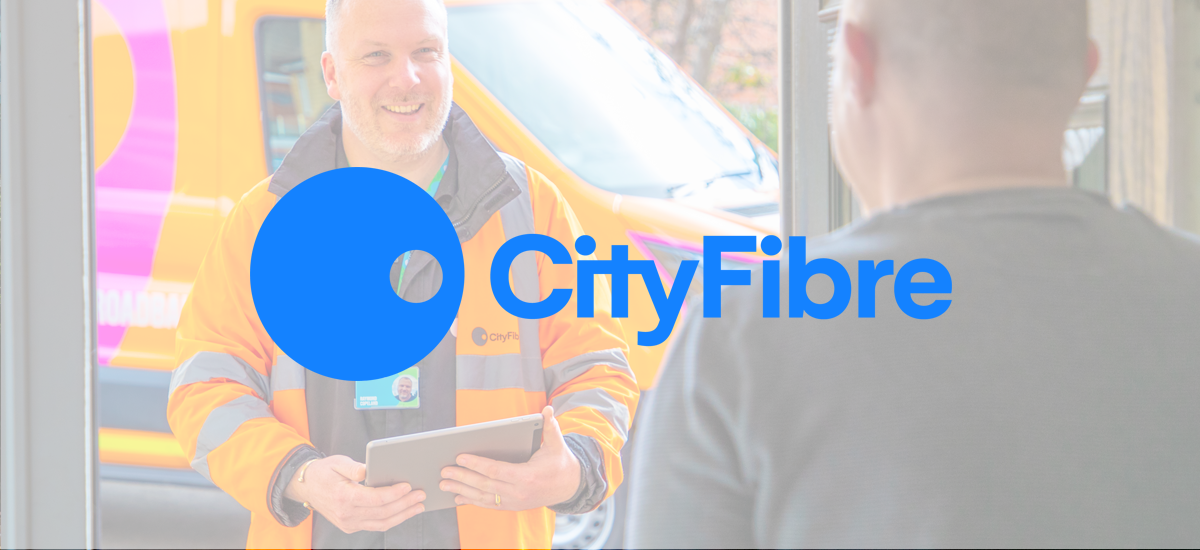CityFibre - Microsoft Teams Chat – a slippery slope?
At SWOOP Analytics we love to share case studies showcasing best practice so you can learn from the best. Let’s face it, best practice starts with better practice and it’s arguably just as important to show how better practice is the first step to achieving best practice.
A perfect example of better practice came shining through when speaking recently with CityFibre – the UK’s largest builder of independent full fibre infrastructure.
An increasing number of teams within CityFibre have already had eyes opened to a more effective way of working, but the journey to get everyone collaborating transparently in the Microsoft 365 suite of tools is far from over.
One team at CityFibre just starting the journey towards successful digital collaboration is the Sales team. The better practice in this case has been championed by Martin Pedler, who leads the Key Accounts Sales team.
Under his steer, an entire team has purposely moved away from Microsoft Teams chat to a common Microsoft Teams channel structure that is now serving 80 account management teams.
Martin Pedler, Carrier & National Sales Manager, CityFibre.
“Our starting ambition was that individuals across CityFibre who have a question about what is going on for a particular customer account should be able to go to that account team, learn what they need to know and then contribute,” explained Martin.
This seemingly simple shift has been a game changer. Suddenly knowledge isn’t lost in chat, never to be seen again, but captured in a Microsoft Teams channel for everyone to reap the benefit.
Martin and his team had become increasingly frustrated by fragmented email chains, never knowing which document was current and having to constantly seek out up-to-date information on the status of certain account activities.
“I was one of many people drowning in email and spending too much time searching Outlook for the right emails and files,” Martin said.
“Teams channels, for me, were the logical place for topical conversations to be taking place and we needed to get everyone onto the same page.”
The Sales team set up a handful of dedicated channels in their team in Microsoft Teams and agreed on some simple usage protocols.
Once a brief training session on how to use Teams and SharePoint effectively had been conducted, a far more streamlined flow of information and communication began to benefit the group.
“Making these changes has had a huge impact on the quality of our digital platform-based conversations,” said Martin.
“It has shifted us away from email threads to topical engagement and file management, with everything now easily searchable in a shared space. And most importantly it’s helping us to manage and support our customers more efficiently.
“This is definitely a journey and there is plenty more benefit yet to extract, but we started with the right behaviours and we’re now using this as a foundation for onward improvement.”
Once Martin’s colleagues saw the benefit of moving away from email and private chat to working in Microsoft Teams channels, the wider Sales team wanted to extend the improvements across all account teams, ensuring that appropriate individuals within CityFibre could find out what’s happening on any customer account, at any time, with just a few clicks.
The new approach was rolled out in January 2023. Since then, data from SWOOP Analytics has shown a continual boost in Microsoft Teams channel messages, a drop in Teams chat activity, and a welcome decline in internal email usage.
“There is still a long way to go before our community of Sales teams can claim full digital collaboration success though,” Martin said.
“Chat obviously has its place, but using it is a slippery slope and even when you’ve made a concerted effort to shift away from it, it’s easy to fall back into bad habits and end up drowning in hundreds of unstructured, undifferentiated chats. Sharing documents within those chats also exacerbates the issue.”
Another frustration for CityFibre is when participants of Microsoft Teams meetings create their own chat, rather than capturing the conversation in the relevant Teams channel.
“The fact that this is even possible tempts people back into these private silos,” Martin said.
“Now I actively encourage our team not to use chat or email as the default at all, as so much rich content gets buried this way. Our goal from the start was to bring that content into the right Teams channel so it can be accessed by all who need it – including new people joining the team.”
When measuring digital success on M365, or digital improvement, CityFibre is able to look to SWOOP’s Chat Liberated and Email Liberated measures.
Chat Liberated shows how good they are at collaborating in Microsoft Teams channels and Viva Engage compared with collaborating in Microsoft Teams chat.
Email Liberated shows how good they are at collaborating in Teams channels and Viva Engage compared with sending emails.
The Sales team’s decision to embrace Teams channels has not only reduced chat and email conversations, but files are now stored on the Teams channel via SharePoint.
The result is a significant and continual improvement in digital collaboration habits.
While Martin believes there is still a lot of room for digital collaboration improvement, making the one small change of posting in Microsoft Teams channels rather than chat is making a real difference every day, especially as more and more people fully embrace the new way of working.
This better practice of the sales community working in Teams channels is another step towards CityFibre becoming a best practice M365 workplace.






